From The Trenches
Bannockburn Booty
By JASON URBANUS
Monday, June 09, 2014
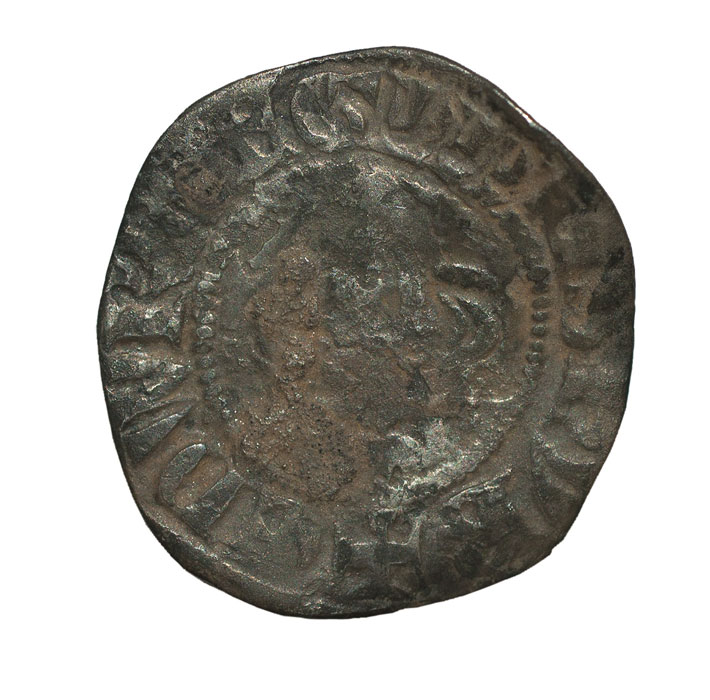 As the 700th anniversary of the Battle of Bannockburn approaches, an archaeological campaign is providing new details about the famous clash, considered one of the most important events in Scotland’s history. In 1314, Robert the Bruce defeated the forces of the English monarch Edward II, leading to Scottish independence. Over the past three years, researchers have reconnoitered the battlefield using geophysical survey, metal detectors, and archaeological excavation. Among the thousands of artifacts retrieved in the area is a silver coin discovered at nearby Cambuskenneth Abbey. It is known that Bruce used the abbey as a storage depot and returned there with his spoils immediately after victory. Archaeologists believe the valuable coin, minted in London in the late thirteenth or early fourteenth century, may be part of the war booty captured by the Scottish hero.
As the 700th anniversary of the Battle of Bannockburn approaches, an archaeological campaign is providing new details about the famous clash, considered one of the most important events in Scotland’s history. In 1314, Robert the Bruce defeated the forces of the English monarch Edward II, leading to Scottish independence. Over the past three years, researchers have reconnoitered the battlefield using geophysical survey, metal detectors, and archaeological excavation. Among the thousands of artifacts retrieved in the area is a silver coin discovered at nearby Cambuskenneth Abbey. It is known that Bruce used the abbey as a storage depot and returned there with his spoils immediately after victory. Archaeologists believe the valuable coin, minted in London in the late thirteenth or early fourteenth century, may be part of the war booty captured by the Scottish hero.
Diminutive Gatekeeper
By ZACH ZORICH
Monday, June 09, 2014
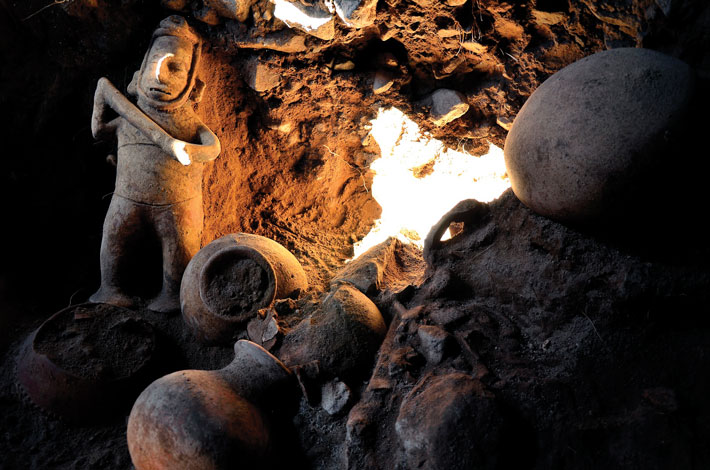
Inside a 1,500-year-old shaft tomb, archaeologists from Mexico’s National Institute of Anthropology and History discovered a ceramic figurine of a shaman holding what may have been a weapon, according to archaeologist Marcos Zavaleta. The shaman was placed at the opening of the tomb as if he were guarding the undisturbed burial, which contained the body of one or possibly two high-status people and six pots that might have held food for the afterlife. The burial complex is located in the state of Colima on Mexico’s west coast. According to Zavaleta, this rare intact burial could reveal much about religion and funeral practices in ancient Colima.
A Bold Civil War Steamer
By ERIC A. POWELL
Monday, June 09, 2014
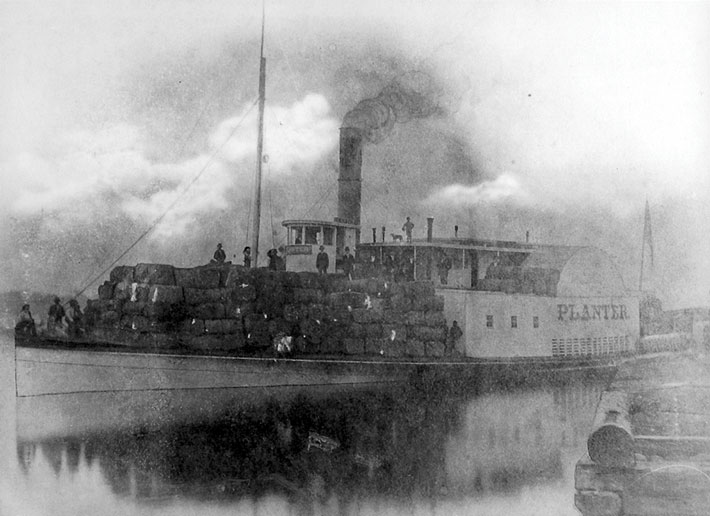 Off the South Carolina coast, archaeologists believe they have identified the remains of Planter, a steamer that was associated with one of the most daring actions of the Civil War. Chartered by the Confederacy as a transport vessel soon after the war began, Planter’s second-in-command was Robert Smalls, an enslaved black man. On a spring night in 1862, while the ship’s white crew attended a ball in Charleston, Smalls and the other black crewmen commandeered the steamer. After taking on his family, Smalls steered Planter past several Confederate forts and delivered the vessel to a Union warship. Smalls was eventually appointed Planter’s captain—the first African American to serve as ship’s master in the history of the United States military.
Off the South Carolina coast, archaeologists believe they have identified the remains of Planter, a steamer that was associated with one of the most daring actions of the Civil War. Chartered by the Confederacy as a transport vessel soon after the war began, Planter’s second-in-command was Robert Smalls, an enslaved black man. On a spring night in 1862, while the ship’s white crew attended a ball in Charleston, Smalls and the other black crewmen commandeered the steamer. After taking on his family, Smalls steered Planter past several Confederate forts and delivered the vessel to a Union warship. Smalls was eventually appointed Planter’s captain—the first African American to serve as ship’s master in the history of the United States military.
After the war, Planter hauled passengers and cotton along the South Carolina coast, and was abandoned after running aground during a severe storm in 1876. Archaeologists with the National Oceanic and Atmospheric Administration (NOAA) carried out a remote-sensing survey where Planter was thought to have been lost. They detected a series of magnetic anomalies that are likely concentrations of iron from the ship’s boiler. “The site is in 10 feet of water and 15 feet of sand, so excavating will be nearly impossible,” says NOAA archaeologist Bruce Terrell. “But because of its historical significance, we’ll monitor the site to ensure it isn’t threatened.”
Inheritance of Tears
By MARION P. BLACKBURN
Monday, June 09, 2014
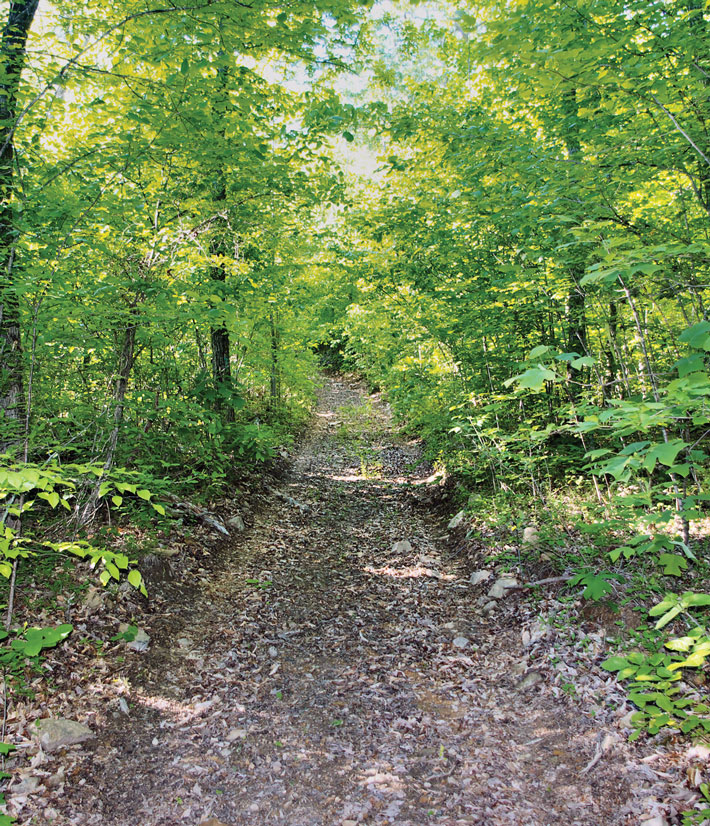 For the Native Americans who were relocated along the Trail of Tears, disease, hunger, and stress were constant companions. The Indian Removal Act resulted in the forced march in 1838 of 17,000 Cherokee from their homes in the Appalachian and Great Smoky Mountains to a reservation in Oklahoma. Along the way, whooping cough, yellow fever, diarrhea, and exhaustion claimed many lives. According to a new study, those who survived, and their descendants, also bore the marks of the trial.
For the Native Americans who were relocated along the Trail of Tears, disease, hunger, and stress were constant companions. The Indian Removal Act resulted in the forced march in 1838 of 17,000 Cherokee from their homes in the Appalachian and Great Smoky Mountains to a reservation in Oklahoma. Along the way, whooping cough, yellow fever, diarrhea, and exhaustion claimed many lives. According to a new study, those who survived, and their descendants, also bore the marks of the trial.
Ann H. Ross, an anthropologist at North Carolina State University, examined data on the skull size of Cherokee from the period following their removal—both among those who were relocated and some who had remained hidden in the Eastern mountains. Using records of Cherokee adult head size made in the early 1900s, she found that both the relocated Western Band and the hidden Eastern Band displayed reduced cranial length and breadth. Cranial size is determined in infancy and childhood, and smaller size is associated with poor nutrition and environmental conditions during this key developmental period. “We were surprised that there were changes in both bands,” Ross says. “The Eastern Band, hiding in the Smoky Mountains, also suffered environmental stress.”
The study has implications for understanding the effects of humanitarian crises, large population movements, industrial development, and contact with outsiders, Ross says. She is also using this type of research to examine the impact of European arrival on Native American populations.
Byzantine Secret Ingredient
By ERIC A. POWELL
Monday, June 09, 2014
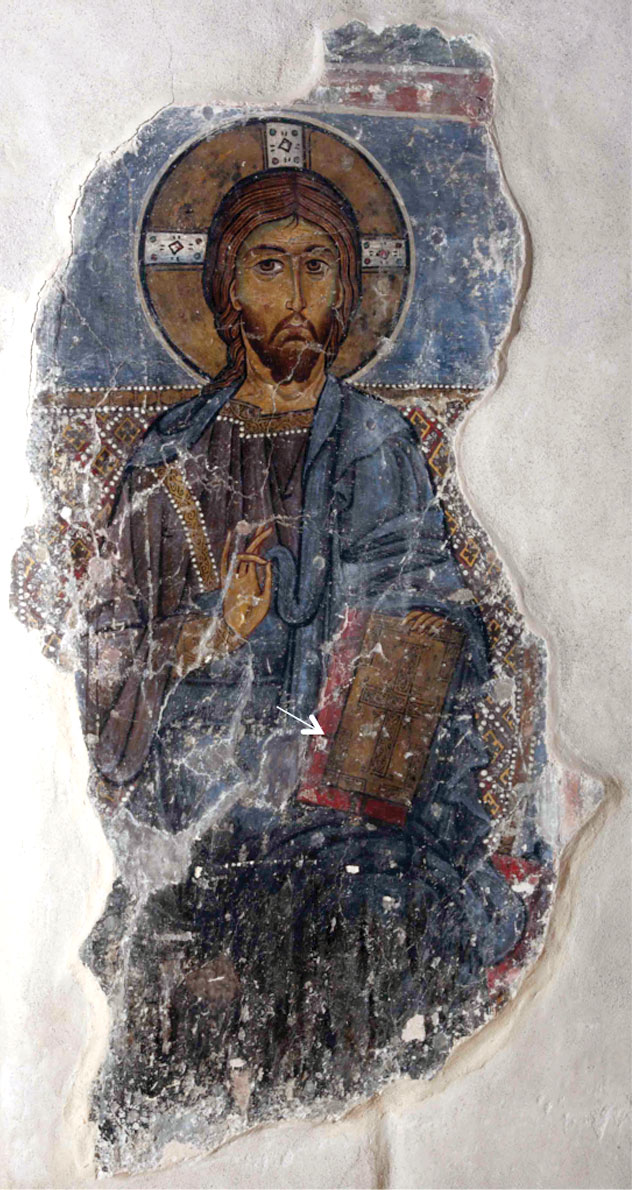 Eight hundred years ago, Byzantine monks painting the walls of a monastery in Cyprus made the aesthetic choice to use asbestos—heat-resistant mineral fibers now known to be highly carcinogenic—to give their work an extra sheen. University of California, Los Angeles, archaeological scientist Ioanna Kakoulli made the discovery while analyzing the chemical makeup of a painting depicting Jesus, beneath which she found a plaster finish containing chrysotile, one of the minerals in the asbestos group. “We were not expecting to find chrysotile in twelfth-century paintings,” says Kakoulli. “It has never been reported and we have never found it on any other Byzantine paintings.”
Eight hundred years ago, Byzantine monks painting the walls of a monastery in Cyprus made the aesthetic choice to use asbestos—heat-resistant mineral fibers now known to be highly carcinogenic—to give their work an extra sheen. University of California, Los Angeles, archaeological scientist Ioanna Kakoulli made the discovery while analyzing the chemical makeup of a painting depicting Jesus, beneath which she found a plaster finish containing chrysotile, one of the minerals in the asbestos group. “We were not expecting to find chrysotile in twelfth-century paintings,” says Kakoulli. “It has never been reported and we have never found it on any other Byzantine paintings.”
The heat-resistant properties of asbestos were known as early as 2000 B.C., when it was used to make pottery in Finland, and Roman artisans included it in fabrics used in funeral pyres to keep the ashes of the dead discrete. But scholars had believed asbestos was not used to make materials such as plasters until the Industrial Revolution. Kakoulli thinks the monks knew or discovered that the mineral made their plaster easy to smooth and able to be polished to a mirror-like surface upon which to paint. She plans to return to the monastery and examine other wall paintings to determine how widespread the innovation was.
Advertisement
Advertisement
IN THIS ISSUE
Advertisement

Recent Issues
-
 May/June 2024
May/June 2024
-
 March/April 2024
March/April 2024
-
 January/February 2024
January/February 2024
-
 November/December 2023
November/December 2023
-
 September/October 2023
September/October 2023
-
 July/August 2023
July/August 2023
-
 May/June 2023
May/June 2023
-
 March/April 2023
March/April 2023
-
 January/February 2023
January/February 2023
-
 November/December 2022
November/December 2022
-
 September/October 2022
September/October 2022
-
 July/August 2022
July/August 2022
-
 May/June 2022
May/June 2022
-
 March/April 2022
March/April 2022
-
 January/February 2022
January/February 2022
-
 November/December 2021
November/December 2021
-
 September/October 2021
September/October 2021
-
 July/August 2021
July/August 2021
-
 May/June 2021
May/June 2021
-
 March/April 2021
March/April 2021
-
 January/February 2021
January/February 2021
-
 November/December 2020
November/December 2020
-
 September/October 2020
September/October 2020
-
 July/August 2020
July/August 2020
-
 May/June 2020
May/June 2020
-
 March/April 2020
March/April 2020
-
 January/February 2020
January/February 2020
-
 November/December 2019
November/December 2019
-
 September/October 2019
September/October 2019
-
 July/August 2019
July/August 2019
-
 May/June 2019
May/June 2019
-
 March/April 2019
March/April 2019
-
 January/February 2019
January/February 2019
-
 November/December 2018
November/December 2018
-
 September/October 2018
September/October 2018
-
 July/August 2018
July/August 2018
-
 May/June 2018
May/June 2018
-
 March/April 2018
March/April 2018
-
 January/February 2018
January/February 2018
-
 November/December 2017
November/December 2017
-
 September/October 2017
September/October 2017
-
 July/August 2017
July/August 2017
-
 May/June 2017
May/June 2017
-
 March/April 2017
March/April 2017
-
 January/February 2017
January/February 2017
-
 November/December 2016
November/December 2016
-
 September/October 2016
September/October 2016
-
 July/August 2016
July/August 2016
-
 May/June 2016
May/June 2016
-
 March/April 2016
March/April 2016
-
 January/February 2016
January/February 2016
-
 November/December 2015
November/December 2015
-
 September/October 2015
September/October 2015
-
 July/August 2015
July/August 2015
-
 May/June 2015
May/June 2015
-
 March/April 2015
March/April 2015
-
 January/February 2015
January/February 2015
-
 November/December 2014
November/December 2014
-
 September/October 2014
September/October 2014
-
 July/August 2014
July/August 2014
-
 May/June 2014
May/June 2014
-
 March/April 2014
March/April 2014
-
 January/February 2014
January/February 2014
-
 November/December 2013
November/December 2013
-
 September/October 2013
September/October 2013
-
 July/August 2013
July/August 2013
-
 May/June 2013
May/June 2013
-
 March/April 2013
March/April 2013
-
 January/February 2013
January/February 2013
-
 November/December 2012
November/December 2012
-
 September/October 2012
September/October 2012
-
 July/August 2012
July/August 2012
-
 May/June 2012
May/June 2012
-
 March/April 2012
March/April 2012
-
 January/February 2012
January/February 2012
-
 November/December 2011
November/December 2011
-
 September/October 2011
September/October 2011
-
 July/August 2011
July/August 2011
-
 May/June 2011
May/June 2011
-
 March/April 2011
March/April 2011
-
 January/February 2011
January/February 2011
Advertisement






